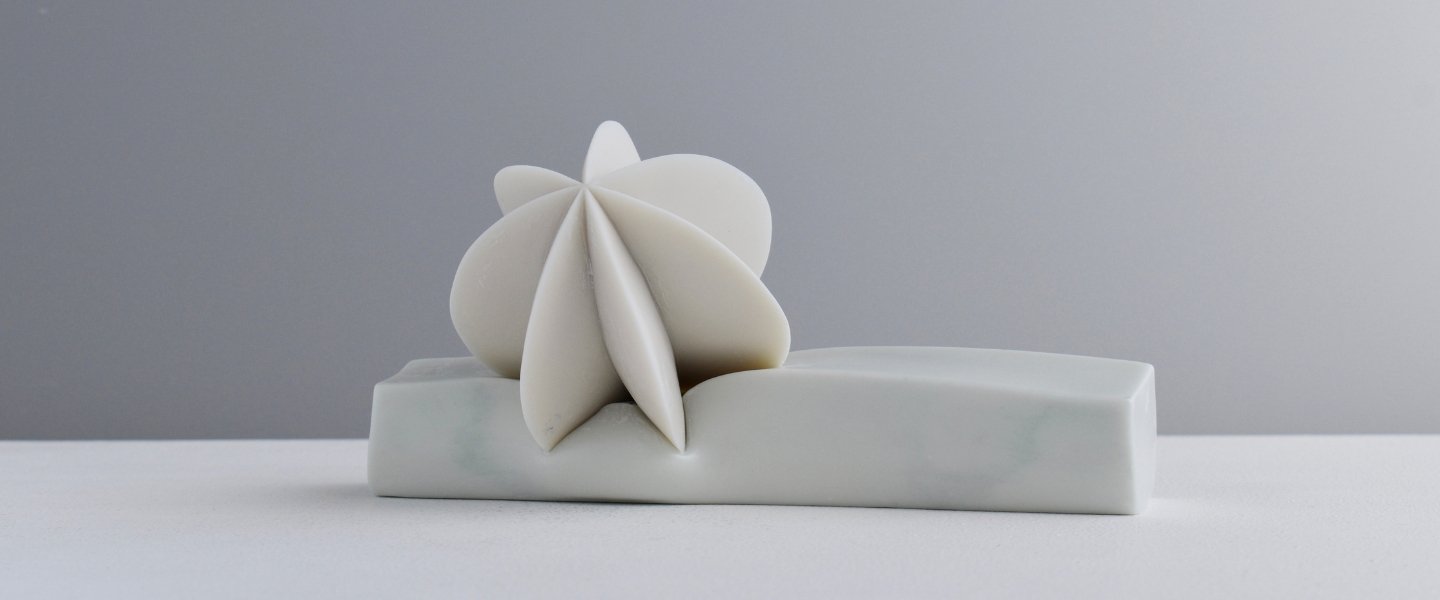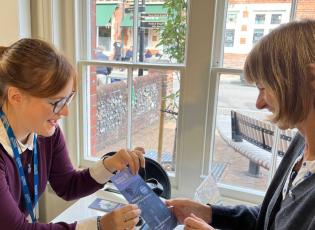Nicholas Lees is a sculptor based in Selborne. Working with porcelain clay, his abstract vessels are thrown on the wheel before being hand-carved. Nicholas Lees: Abstract Vessels presented, for the first time, a survey of one of today’s leading contemporary artists working in ceramics.
A selection of Lees’ sculptural works were shown alongside his rarely-seen works on paper. Through his sculptures and drawings, he explores the ephemerality and uncertainty of perception and how our visual experience of reality is conditional upon light, space and body.
Nicholas Lees: Abstract Vessels
Nicolas Lees: Abstract Vessels included work from three distinct phases of his career. Air (2008) combines a complex throwing and hand-building process. An initial form is carved into a spiral. This precisely made solid form is then encased within textured clay to create a formless surface. The solid is removed and becomes a void around which the surface becomes the form.
This interest in combining throwing and carving led Lees to create his distinctive and internationally acclaimed work. Porcelain cylinders, cones or spheres, including Red Grail, are thrown on a wheel, and once partially dried, they are turned on a lathe. Lees carves into the surface to create a series of precise voids that paradoxically define the boundary of the form.
The ambiguous relationship between precision and formlessness is further explored in a series of works entitled Flux Work, which originated from a residency in Milan awarded to Lees in 2015. Fascinated by how nature grows around and often encases static objects, Lees experimented with placing two precisely made forms into a kiln. One of the forms is made of porcelain with flux in it, which causes it to melt at a lower temperature, so causing the form to soften and wrap itself around the other form, therefore introducing an element of chance into the process.
Included in the exhibition was rarely exhibited drawings that Lees produced in parallel to his ceramic work.
About Nicholas Lees
Born in 1967, Lees discovered his love of ceramics at school. Through an influential teacher, Lees was introduced to the work of German-born studio potter Hans Coper (1920–1981) and encouraged to experiment with Raku firing. As Lees recalls, ‘I got a brilliant fusion of two major threads of twentieth-century studio pottery – Bernard Leach started with Raku pottery in Japan and the European modernism of Hans Coper and Lucie Rie (1902–1995). On reflection, it was quite interesting as a combination.’
Lees studied English and History at university before embarking on a ceramics course at Bristol Polytechnic, where he was taught to throw by British studio potter Walter Keeler (b.1942). After setting up his studio practice, Lees gained a master’s degree in ceramics at Cardiff and an MPhil at the Royal College of Art, London. During his studies, Lees notes he was particularly interested in the connection between the process of how an object is made, its materiality, and its final form or shape. This exploration of ideas around the process of making, the intrinsic qualities of the material and the essential relationship between the object and the viewer continues to be at the heart of his work.

Nicholas Lees, Flux work 23.32, 2023, Parian porcelain and flux. Photo (c)The Artist.jpg


